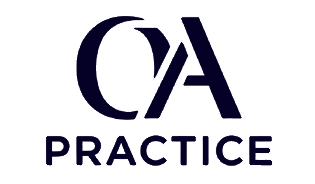D446 Adult Health II - Set 1 - Part 1
Test your knowledge of technical writing concepts with these practice questions. Each question includes detailed explanations to help you understand the correct answers.
Question 1: A nurse caring for a patient with peripheral arterial disease notices the patient dangling their legs off the bed frequently. What is the most appropriate explanation for this behavior that the nurse should understand?
Question 2: During an asthma exacerbation, a patient exhibits increased mucus production and dyspnea during exercise. Which intervention should the nurse prioritize first to achieve immediate therapeutic response?
Question 3: A patient with newly diagnosed amyotrophic lateral sclerosis asks about disease progression. Which complication should the nurse emphasize as the primary concern requiring vigilant monitoring throughout the disease course?
Question 4: A nurse assesses a patient with right-sided heart failure. Which finding would most clearly indicate fluid backing up into the venous system rather than pulmonary congestion?
Question 5: A patient on levothyroxine for hypothyroidism reports new palpitations and shortness of breath. What should the nurse recognize as the most likely cause requiring immediate provider notification?
Question 6: When teaching a patient with COPD about oxygen therapy, what target oxygen saturation range should the nurse emphasize to prevent carbon dioxide retention?
Question 7: A patient with cirrhosis develops confusion and elevated ammonia levels. Which medication would the nurse anticipate administering to reduce hepatic encephalopathy symptoms?
Question 8: During peritoneal dialysis, a patient develops cloudy dialysate drainage with abdominal pain. Which complication should the nurse suspect requiring immediate intervention?
Question 9: A patient with chronic pancreatitis experiences steatorrhea and weight loss. Which intervention would most effectively address these malabsorption symptoms?
Question 10: Following transurethral resection of the prostate, what finding in the catheter drainage would indicate normal healing versus a complication requiring intervention?
Question 11: A patient with SIADH presents with confusion and muscle cramps. Which laboratory finding would the nurse expect to correlate with these neurological symptoms?
Question 12: When caring for a patient receiving radiation therapy, which skin care instruction should the nurse emphasize to prevent radiation dermatitis?
Question 13: A diabetic patient asks about foot care priorities. Which daily practice should the nurse emphasize as most critical for preventing serious complications?
Question 14: During a gout flare, a patient receives colchicine and allopurinol. What should the nurse teach about the different purposes of these medications?
Question 15: A patient with suspected glomerulonephritis presents with cola-colored urine and facial edema. Which dietary modification would be most appropriate during acute management?
Question 16: What distinguishes a hemorrhagic stroke from an ischemic stroke in terms of immediate medical management approach?
Question 17: A patient with end-stage renal disease on hemodialysis develops muscle cramps and hypotension during treatment. What is the most likely cause?
Question 18: In a patient with suspected tuberculosis, which diagnostic test would provide definitive confirmation of active disease requiring isolation precautions?
Question 19: Post-operatively following colon surgery, a patient develops wound dehiscence with visible bowel loops. What is the priority nursing intervention?
Question 20: A patient with gastroesophageal reflux disease asks about lifestyle modifications. Which recommendation would most effectively reduce nighttime symptoms?
Need Guaranteed Results?
Our exam support service guarantees you'll pass your OA on the first attempt. Pay only after you pass!
Get Exam Support